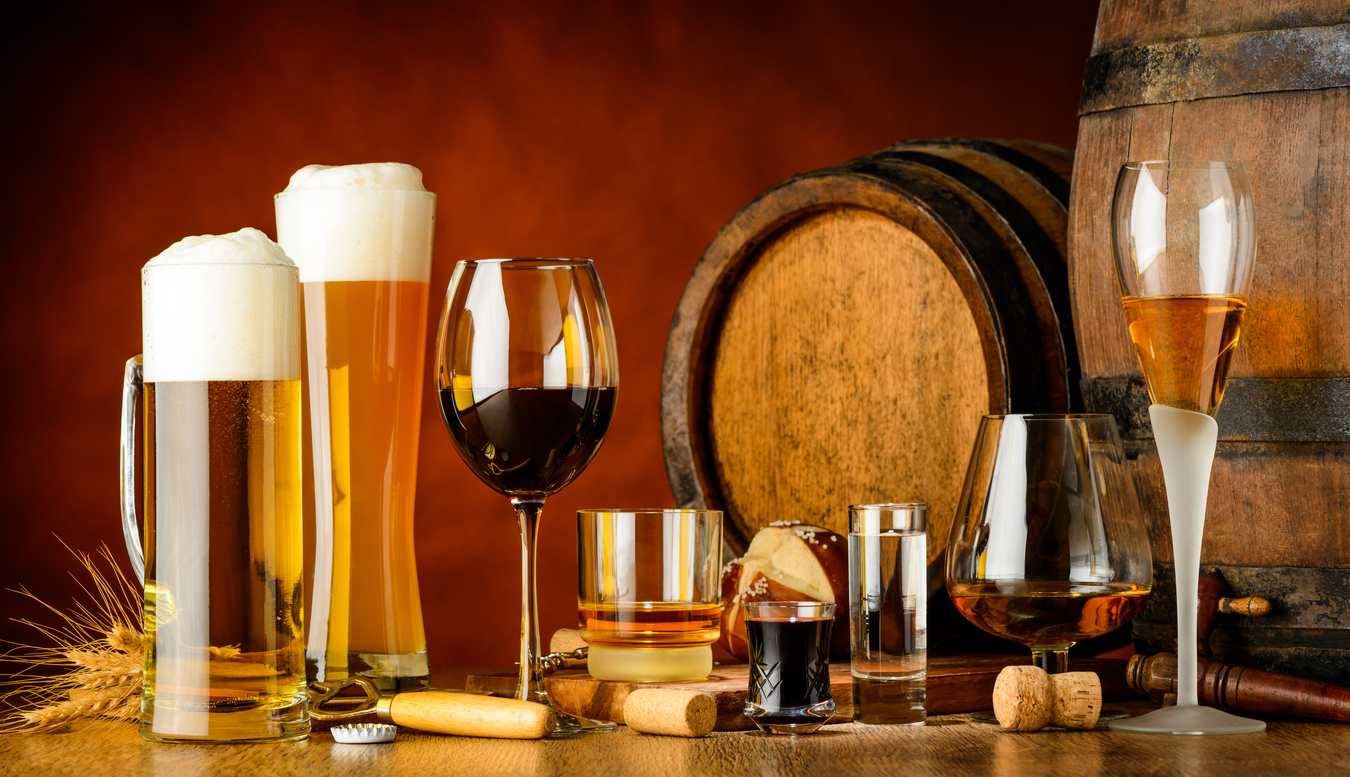Does alcohol have an expiration date?
Alcohol has a ‘best before’ date rather than a ‘use by’ date, meaning it is safe to drink past the date on the container. The amount of time it lasts for depends on the type of alcohol. Neat alcohol lasts indefinitely, so it all comes down to how the alcohol has been produced and what else is in the drink that can affect the taste and quality of the product over time.
As a general rule, the taste will start to change gradually over time once the drink has passed its best before date. To find out more about food dates and what they mean, click here.
A quick guide to how long alcohol will last:
| Product | Time past best before date when alcohol should still taste good! | ||
| Quality unlikely to be compromised | Still good, but there is a chance it may taste a little different | ||
| Normal beers (lagers, IPAs, pale ales) | 0.5 – 2 years | 3 years | |
| High-alcohol beers (imperial stouts, porters) | 5 – 10 years or more depending on the beer | n/a | |
| Everyday bottled red wine | 2 – 3 years | 4 years | |
| Everyday bottled white wine | 1 – 2 years | 2 – 3 years | |
| Box of wine | 1 year | 2 years | |
| Fine wine | Decades | n/a | |
| Non-vintage champagne | 3 – 4 years | 5 – 7 years | |
| Vintage champagne | decades | decades | |
| Prosecco | 1 year | 1 – 2 years | |
| Cava | 2 – 3 years | 4 – 6 years | |
| Spirits | 10 years or more | decades | |
Beer
Can beer “go bad”?
No, beer has no use by date, meaning it is safe to drink well past the best before date. Beer won’t be dangerous to drink, but the taste of the beer will deteriorate over time. How you store your beer will also affect the taste. Beer is very sensitive to light and dramatic temperature changes. Make sure you store your beer in a cool dark place, to avoid the beer “skunking”.
The best test to assess your beer is to use your common sense. Since the beer won’t cause you harm, why not try a little bit and see how it tastes to you? If you think it tastes fine, there’s no reason not to drink it.
Does sediment mean the beer is off?
No, sediment is a normal occurrence if the beer has not been filtered or pasteurised and will not cause you any harm. It doesn’t indicate that the beer is off, it simply means that yeast and protein particles have fallen out of the solution (the liquid) and floated to the bottom, creating a thin layer. Beers that are left for longer are naturally likely to have more sediment. You can absolutely still drink a beer if it has particles at the bottom.
How long does beer last past its best before date?
How long beer lasts depends on the type of beer and how it is stored. A standard light lager will normally last around 6 months to 2 years after the best before date if kept in the fridge and 6 – 9 months if kept in the cupboard. This is also true for a standard IPA or ale. Most beers on the market are best drunk 6 – 24 months after the best before.
There are some beers that are created with ageing in mind, a bit like wine, and can actually taste better over time. These tend to be high-alcohol beers of around 9%ABV, such as barleywines, porters and imperial stouts, and beers made with organisms other than yeast to produce flavours, such as lambics, gueuzes, and saisons. These beers can be aged like wine in cellars or places that emulate the cool, dark conditions of cellars.
Bonapetit have a great guide to ageing beers if you want to try it out.
How should I store beer?
Beer should either be kept in the fridge or in a cool, dark place. If beer has come from a supermarket fridge, you should definitely put it in the fridge as the fluctuation in temperature may affect it. Beer often comes in dark bottles to minimise its exposure to light. Hops are particularly sensitive to light and when exposed can create the off or skunked flavour that is often associated with off beer.
Wine
How long wine lasts really depends on its quality. It’s well known that the best wines get better with age and some wines can last for decades. Everyday wine is a little different, however. It will normally last a year or two after it has past its best before. Generally speaking, red wine will last longer than white wine. A bottle of white wine will be fine for 1 – 2 years after the best before. Bottled red wine will last for 2 – 3 years after the best before.
Boxes of wine are not quite as good at keeping the product fresh, so you are probably looking at approximately a year after best before for the wine to still taste good.
As ever, the best approach is to look, smell and taste the wine to assess whether you want to drink it or not. It is safe to consume well after the printed best before date.
Champagne, prosecco, cava
Champagne is aged as part of the production process and the flavour develops over time. It can easily last for up to 4 years without the flavour being compromised.
Unlike champagne, prosecco tends to be best in the first couple of years after bottling. For that reason, it’s best to consume your prosecco within a year of the best before date.
Cava is produced in a similar way to champagne and will, therefore, last longer than prosecco.
Spirits
Since spirits are high in alcohol content they tend to last a very long time, but they won’t get better with age like wine and some beers. In fact, over time spirits can be affected by processes such as oxidisation and evaporation. Spirits will react with oxygen and this can dampen the flavour, but this tends to take some years.
A small amount of evaporation is also to be expected if keeping spirits for a long time. You can reduce this by keeping the spirits in a cool place.

